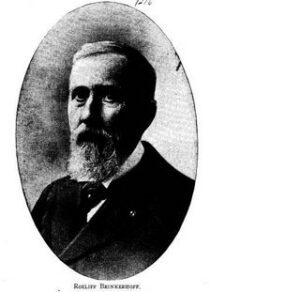 I recently came across the following quotation about the importance of archaeology from one of the founders of the Ohio Historical Society: “Archaeology is but a single chapter in the gospel of Nature, but it is so associated and correlated that its interpretation demands a mastery of all the others. It is not the first, but the last. It is not the root, or the stem, or the branch, or the leaf, but the consummate flower of nature. It is the keystone of the mighty arch which the Æons of the infinite past have builded. In the temple of Nature, therefore, archaeology is the inner sanctuary” – R. Brinkerhoff (1875)
I recently came across the following quotation about the importance of archaeology from one of the founders of the Ohio Historical Society: “Archaeology is but a single chapter in the gospel of Nature, but it is so associated and correlated that its interpretation demands a mastery of all the others. It is not the first, but the last. It is not the root, or the stem, or the branch, or the leaf, but the consummate flower of nature. It is the keystone of the mighty arch which the Æons of the infinite past have builded. In the temple of Nature, therefore, archaeology is the inner sanctuary” – R. Brinkerhoff (1875)
General Roeliff Brinkerhoff (1828-1911) was a veteran of the American Civil War and one of the co-founders of the Ohio Archaeological Society in 1875. In 1884, that group was reorganized and incorporated as the Ohio Archaeological and Historical Society (now just the Ohio Historical Society). He served as president of the Society from 1893 until 1907. The quote is from his “Address of Welcome” to the Ohio State Archaeological Convention, September 1st, 1875, Mansfield, Ohio. I like the quote because it is a passionate statement about the centrality of archaeology for answering the questions so famously phrased by the painter Paul Gauguin: “Where do we come from? What are we? Where are we going?” While I don’t disagree with his feeling about the importance of archaeology, I do have problems with the basis for his belief.
Brinkerhoff expressed the common misconception that evolution is just another word for progress. The late biologist Stephen J. Gould argued strongly that such a view was a dangerously egocentric way of looking at the world. He wrote that the process of evolution was not the stately ascent of a ladder leading from worms at the bottom rung to fishes to rabbits to monkeys and, finally, to humans at the topmost rung, but rather the unruly growth of a luxuriant bush. So Brinkerhoff got the basic metaphor right, but he was wrong about humans representing “the consummate flower of nature.” In a broader view, all living species of plants and animals represent equally important flowers on nature’s bush. As archaeologists, we are particularly interested in one flower and in following the stem back to the branch and on down to the roots. But we should recognize that people aren’t the “keystone of the mighty arch.” A better metaphor might be that we are a single tessera in the colorful mosaic of life on this fragile planet. I share a special fondness for that particularly shiny tessera, but its real beauty comes from seeing it in the context of the whole pattern of the mosaic.